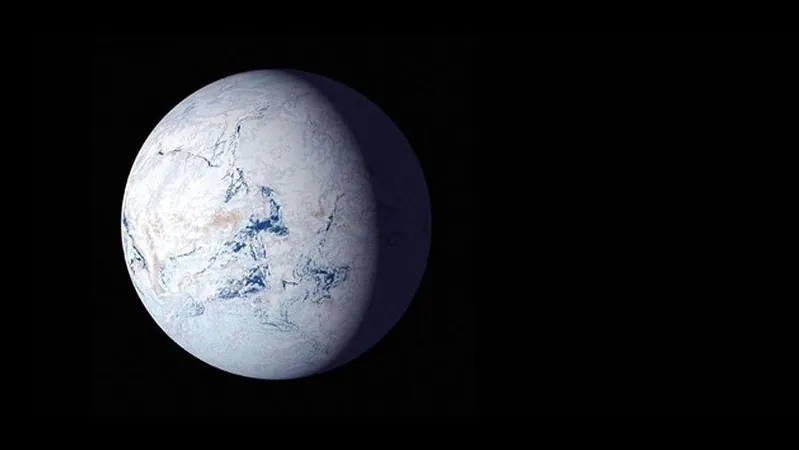
When the Earth Became a Giant Iceball: Revelations About Snowball Earth 600 Million Years Ago
2024-11-13
Author: Daniel
Imagine a world where every body of water was frozen solid and glaciers stretched from pole to pole. Between 720 million and 635 million years ago, Earth was likely plunged into a deep freeze known as "Snowball Earth," an event that has fascinated geologists for decades. However, debates have surged regarding the extent of this icy grip—did the frost cover the entire planet, reaching even the equator?
Recent findings at the Tavakaiv sandstones, or "Tava" sandstones, nestled in Colorado's Rocky Mountains, suggest that the idea of a global snowball might not just be a theory but a reality. Liam Courtney-Davies, the lead researcher at the University of Colorado, Boulder, unveiled groundbreaking evidence that could reshape our understanding of this frosty chapter in Earth’s history.
Why does this location matter? Colorado’s current position near the middle latitudes contrasts sharply with its ancient position at the equator, where it formed part of the supercontinent Laurentia. The Tava sandstones, found along the Front Range and vividly exposed near Pikes Peak, tell a story of geological upheaval—these former surface sands were thrust underground, likely due to the immense pressure of overlying ice sheets.
Courtney-Davies explained that the features observed are known as injectites, classic geological formations that arise beneath ice sheets, resembling some seen in Antarctica today. Intrigued by how these rocks became buried, the research team utilized an advanced technique called laser ablation mass spectrometry to analyze mineral samples rich in iron oxide.
By firing a laser at these samples, the team released tiny amounts of uranium, which decays at a consistent rate, allowing researchers to pinpoint when these geographical shifts occurred. Their findings date the rock burial to approximately 690 to 660 million years ago—squarely within the hypothesized timeframe of the Snowball Earth phenomenon.
Understanding this period could shed light on a critical evolutionary timeline. At the tail end of Snowball Earth, life began to flourish anew, giving rise to the planet's first multicellular organisms. Courtney-Davies noted how closely intertwined climate and life have always been, remarking, "The evolution of our climate and life itself were shaping each other during this transformative period."
This research sheds new light on one of Earth’s most intriguing epochs, enhancing our grasp of not just historical climate change but its profound impact on biodiversity. As scientists continue to unravel the mysteries surrounding Snowball Earth, we may discover invaluable lessons for understanding current global climate challenges and the Earth's evolutionary lineage.
Stay tuned, as future discoveries may further reframe our understanding of how life and climate have adapted—and how they may continue to change as our planet evolves.





 Brasil (PT)
Brasil (PT)
 Canada (EN)
Canada (EN)
 Chile (ES)
Chile (ES)
 España (ES)
España (ES)
 France (FR)
France (FR)
 Hong Kong (EN)
Hong Kong (EN)
 Italia (IT)
Italia (IT)
 日本 (JA)
日本 (JA)
 Magyarország (HU)
Magyarország (HU)
 Norge (NO)
Norge (NO)
 Polska (PL)
Polska (PL)
 Schweiz (DE)
Schweiz (DE)
 Singapore (EN)
Singapore (EN)
 Sverige (SV)
Sverige (SV)
 Suomi (FI)
Suomi (FI)
 Türkiye (TR)
Türkiye (TR)